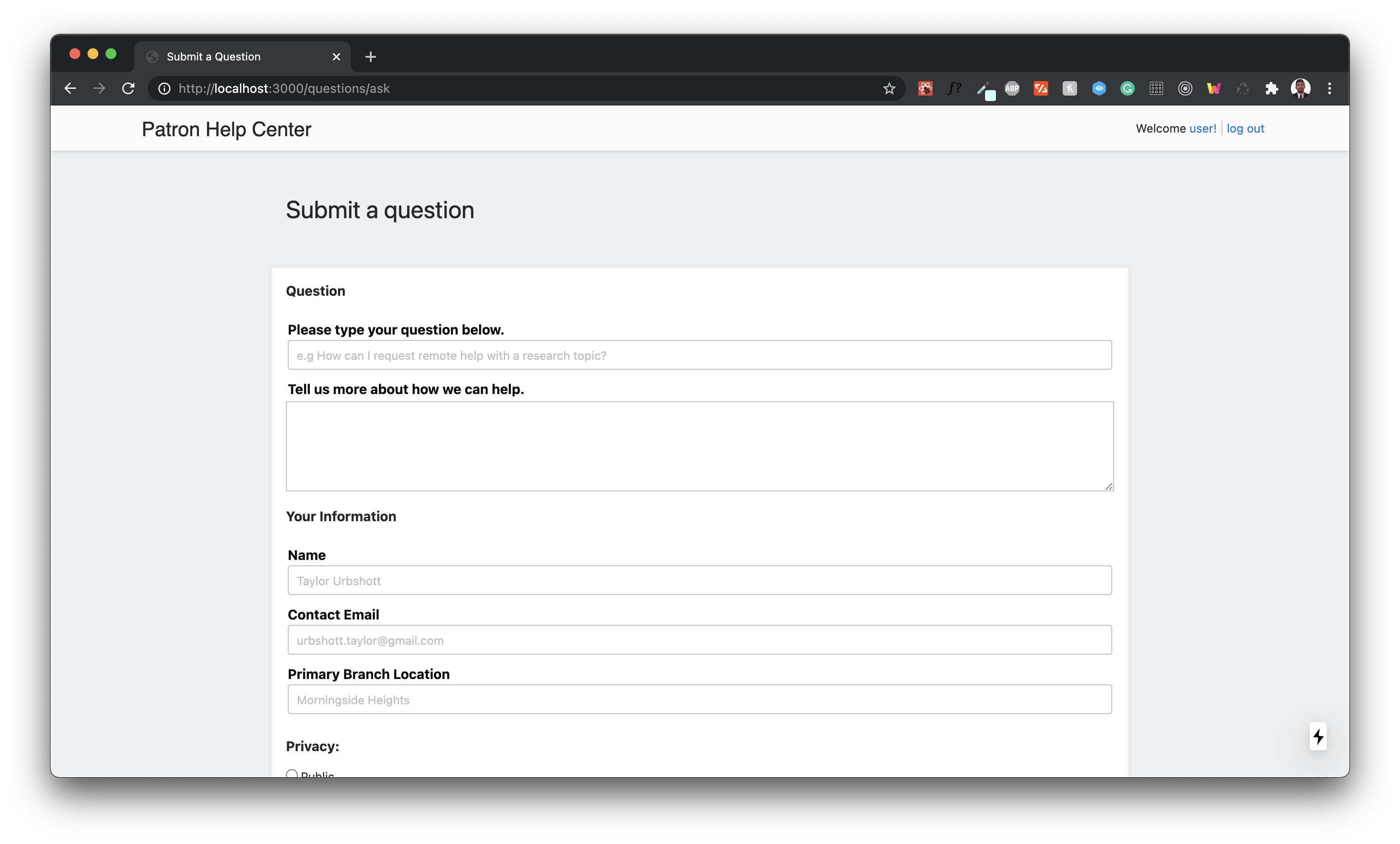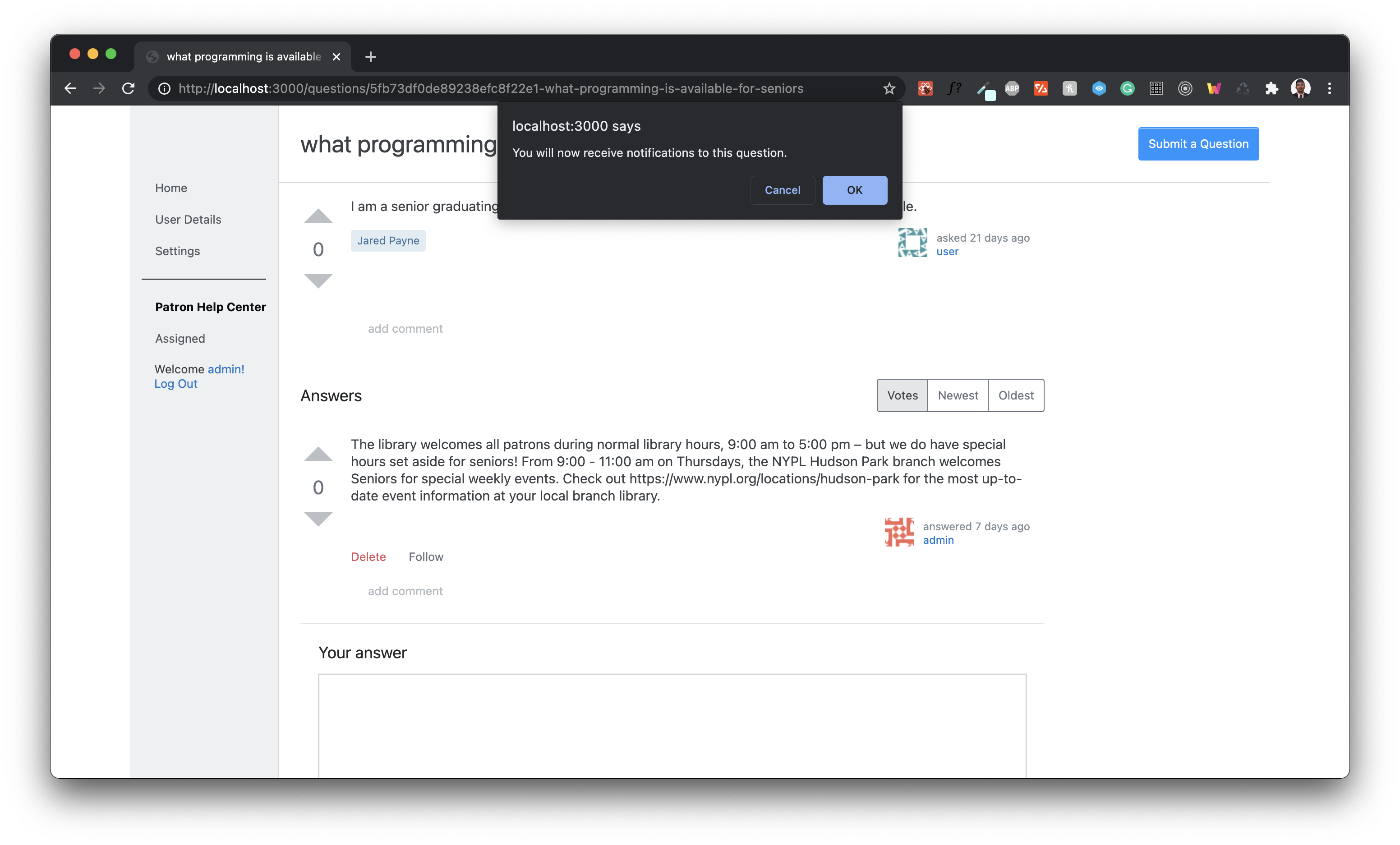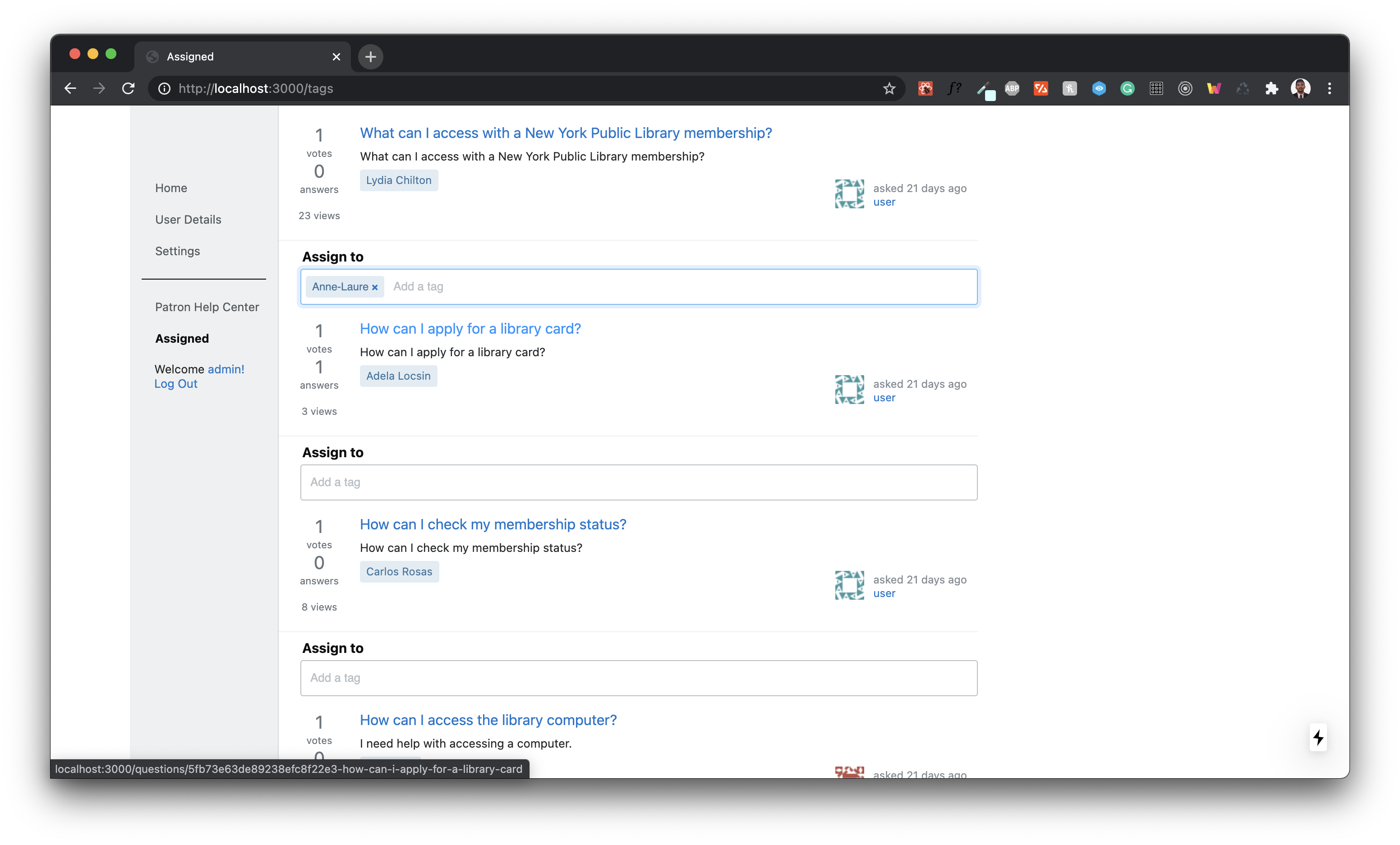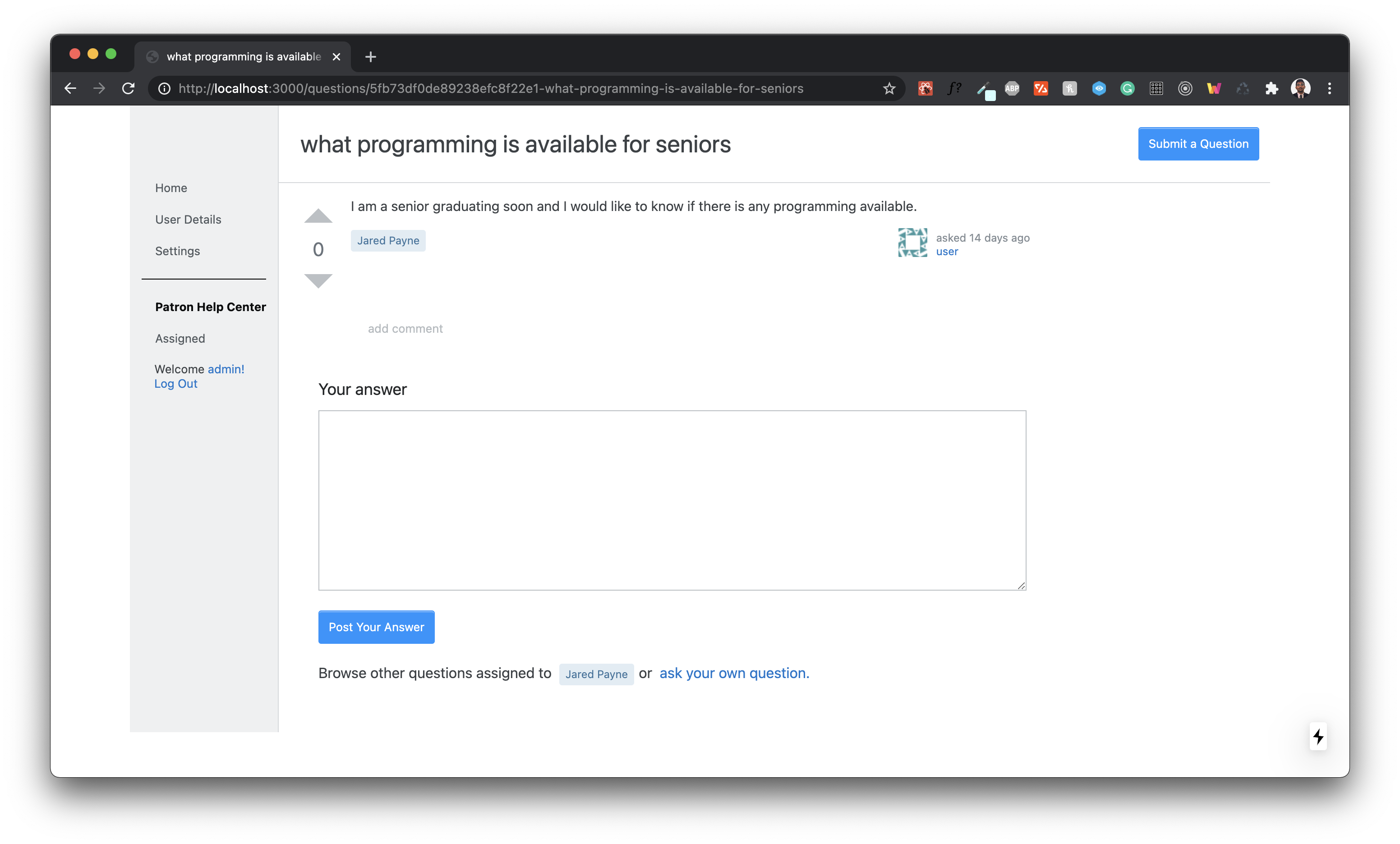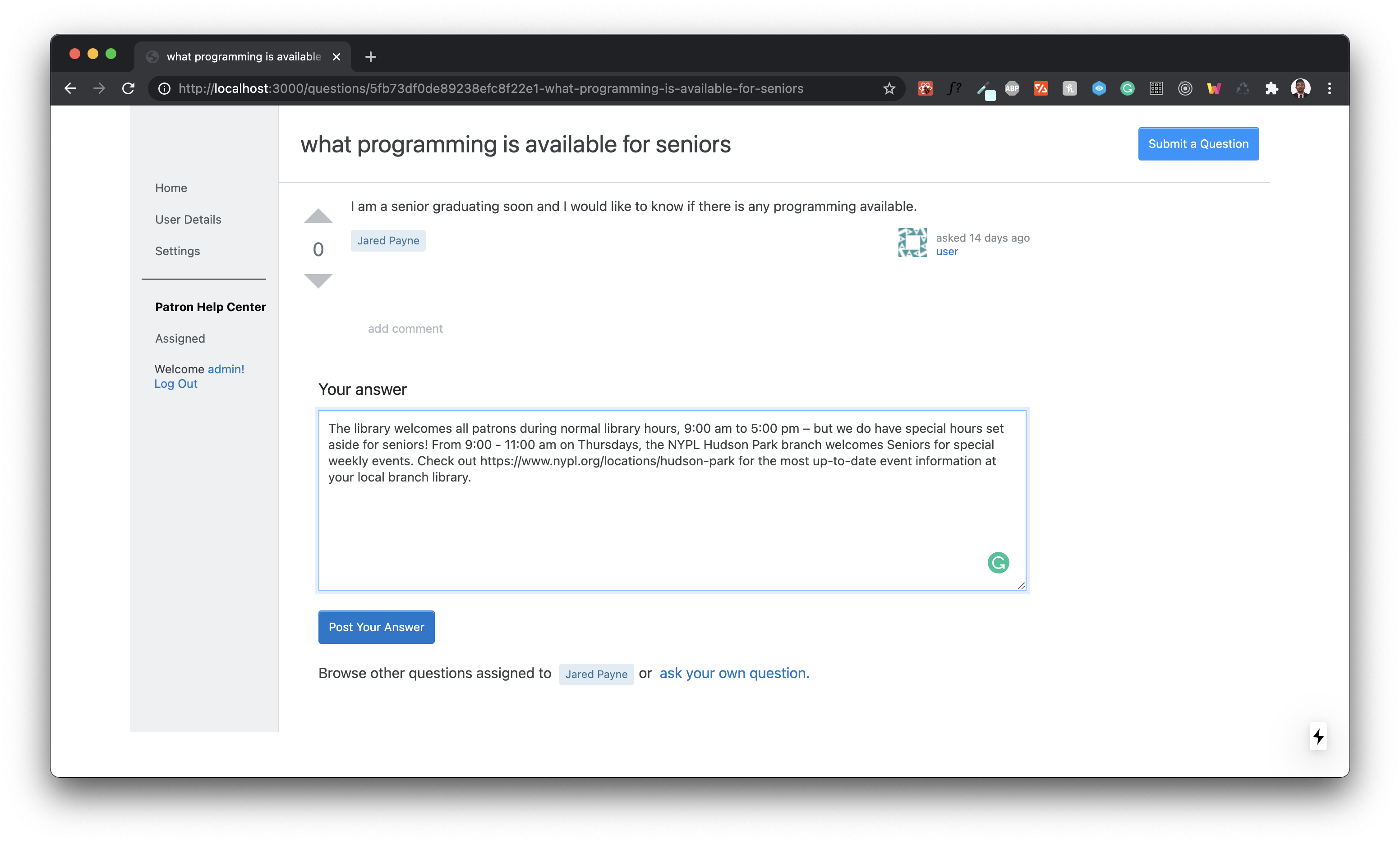Our team’s design challenge was to create a public-interest technology
(PIT) tool that would support librarians in their quotidien work through knowledge sharing.
Through our initial conversations with librarians at the
Queens Public Library
, the
Miami-Dade Public Library System
, and other public libraries in the United States,
we primarily considered how we might help librarians make exceptions to rules when
needed for high-need groups. The scope of our PIT tool focuses on creating a tool that would
redirect the day-to-day labor of librarians who are tasked with assisting patrons toward a more permanent resource that could continuously serve as a form of knowledge sharing, as opposed to fleeting and temporary interactions.

Landing page for patrons within the "Patron Help Center".









